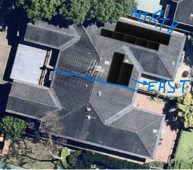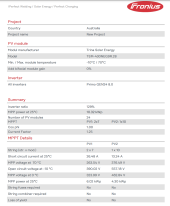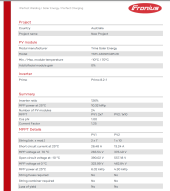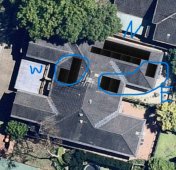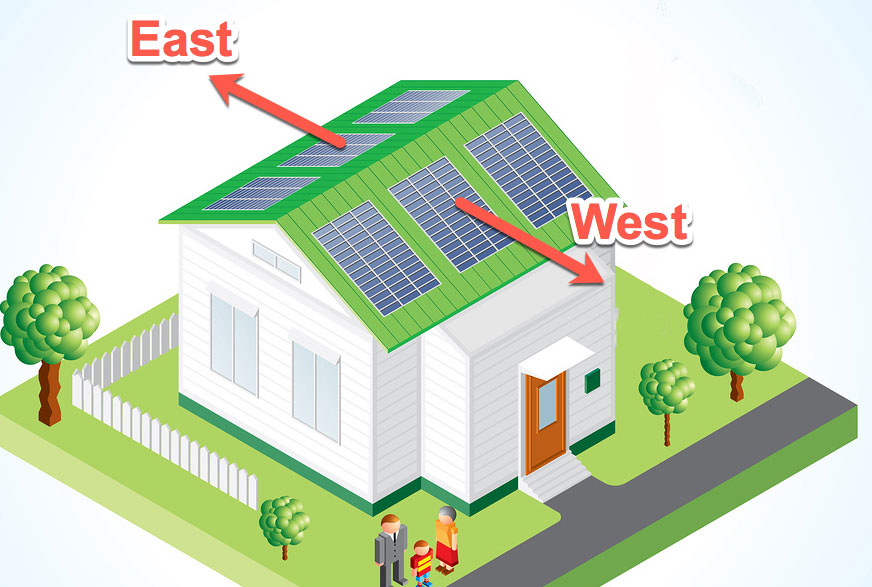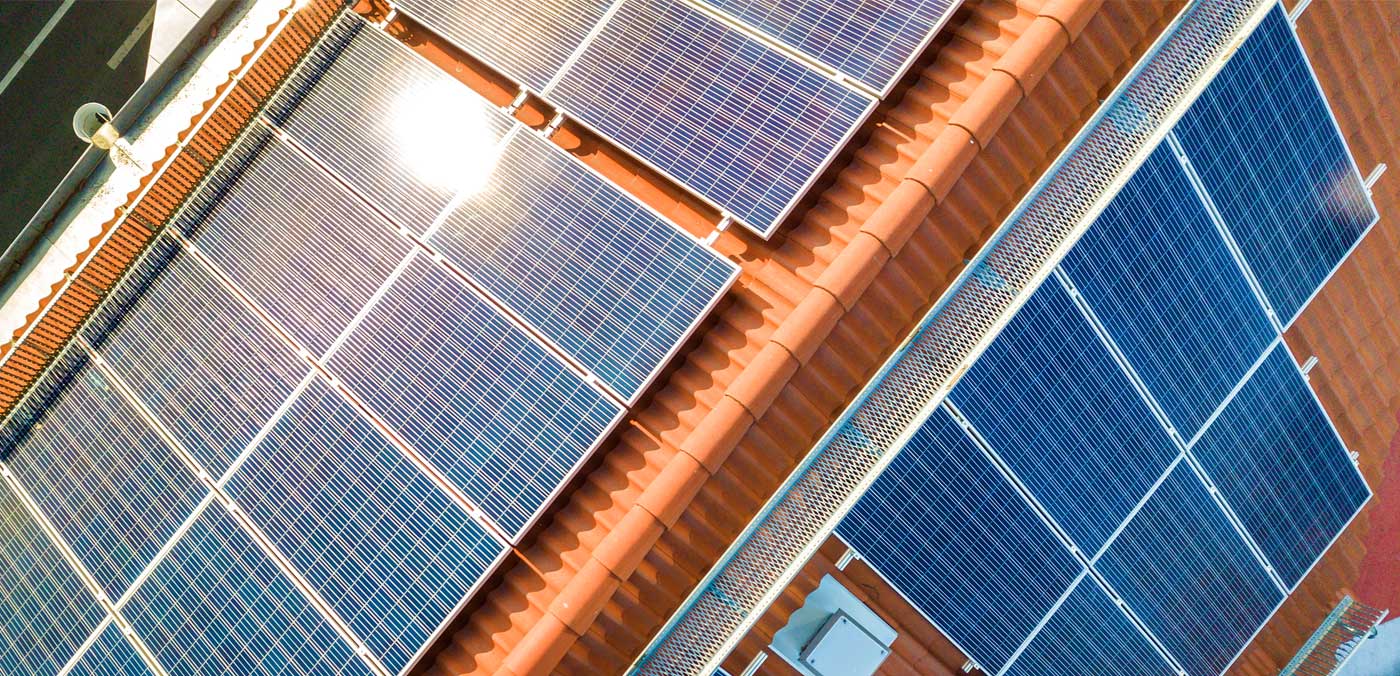First of all, I would like to clarify that I don't have solar experience except for some reasonable research over the past month. Also that I'm designing my grid-connected system chatting to a couple of installers so it's not a true DIY job.
After some thinking and researching, I've landed on the following high level system design:

I've asked for a quote from two installers, one of them sent me a quote and within a few hours they they came back identifying an issue with the pairing of Fronius and Trina, specifically on the number of panels (minimum and maximum) that can be in a single array referring to the MPPT voltage range and he suggested to swap the Trina for Jinko panels as they have a smaller OCV, I took this concern to the other installer but he doesn't seem to be seeing a concern at all and he keeps referring to previous installations that he's done and the only technical answer that I got that the Inverter operating voltage range is 600 V with no consideration to the MPP Voltage range.
I've included the response that I got from the installer where they detailed the issue, keen to hear your thoughts on the following:
Many thanks,
Guirgis

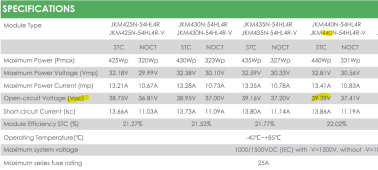
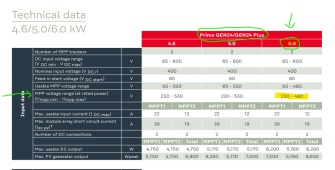
Here's the proposal from the installer who identified the issue with the Fronius/Trina pairing.

After some thinking and researching, I've landed on the following high level system design:
- Placing around 11 panels on the north facing roof
- Placing around 6 to 7 panels on the east facing roof
- Preference is to go with Trina Vertex S+ panels, 430 or 435W so around 7.8 KW system
- Fronius inverter, Primo or GEN 24 model whatever's available.
- Looking to downsize the inverter to 6KW to maximise the efficiency as I've got a lot of trees around me so it's unlikely that the panels will be operating at 100%.

I've asked for a quote from two installers, one of them sent me a quote and within a few hours they they came back identifying an issue with the pairing of Fronius and Trina, specifically on the number of panels (minimum and maximum) that can be in a single array referring to the MPPT voltage range and he suggested to swap the Trina for Jinko panels as they have a smaller OCV, I took this concern to the other installer but he doesn't seem to be seeing a concern at all and he keeps referring to previous installations that he's done and the only technical answer that I got that the Inverter operating voltage range is 600 V with no consideration to the MPP Voltage range.
I've included the response that I got from the installer where they detailed the issue, keen to hear your thoughts on the following:
- Does the MPPT voltage range affect the number of panels that can be fit in a single array or is it irrelevant? I've seen it linked more with battery connected PV systems.
- What are your thoughts on Fronius Primo vs Fronius Gen 24?
- What do you think of the Fronius/Jinko proposal?
Many thanks,
Guirgis
Maximum voltage for the Fronius is 480 volts - we use MPPT voltage range from inverter spec sheet. Then we use (STC) VoC or Open Circuit Voltage from the spec sheet of solar panels.
Trina Panels are 51.8 voc per panel. 8 panels x 51.8 (x 1.1 for losses) = 455 voc per string. 9 panels is 512 voc per string and over the allowable voltage as per Fronius.
Jinko Panels are 39.38 voc. using the same calculations = min 6 panel, max 11.
See screenshots of data sheets below which are already linked into your proposal.
We could add a single panel to the eastern roof as a solution for the current Fronius 7.04kw design which I have adjusted now on your proposal.



Here's the proposal from the installer who identified the issue with the Fronius/Trina pairing.




